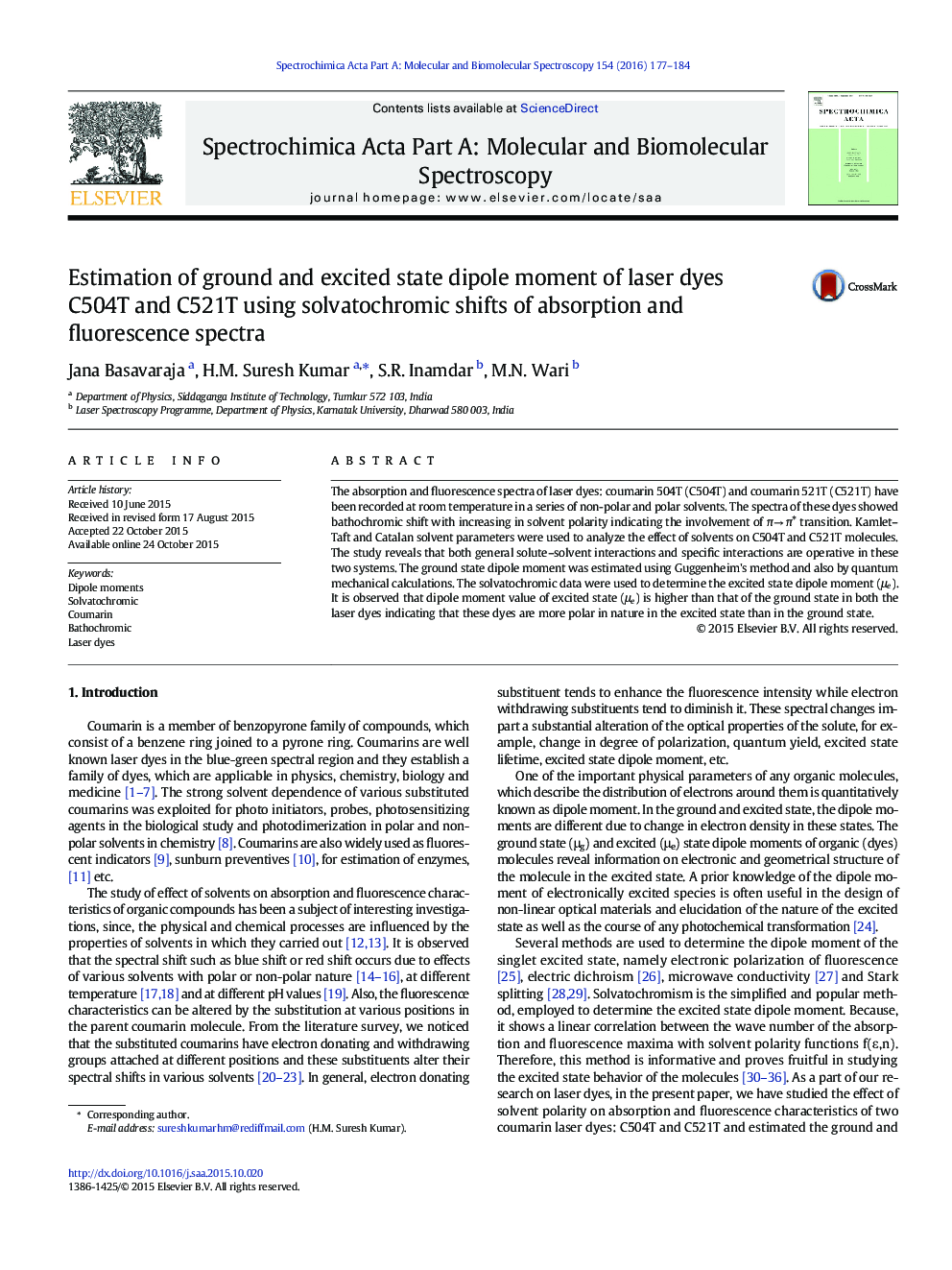| Article ID | Journal | Published Year | Pages | File Type |
|---|---|---|---|---|
| 1231791 | Spectrochimica Acta Part A: Molecular and Biomolecular Spectroscopy | 2016 | 8 Pages |
•C504T and C521T laser dyes are showing three possibilities of hydrogen bond formation•The ground state dipole moment () is estimated using Guggenheim’s method•Solvatochromic correlations are used to estimate excited state dipole moment ()•It is observed that•General and Specific solute-solvent interaction is operating in the system.
The absorption and fluorescence spectra of laser dyes: coumarin 504T (C504T) and coumarin 521T (C521T) have been recorded at room temperature in a series of non-polar and polar solvents. The spectra of these dyes showed bathochromic shift with increasing in solvent polarity indicating the involvement of π → π⁎ transition. Kamlet–Taft and Catalan solvent parameters were used to analyze the effect of solvents on C504T and C521T molecules. The study reveals that both general solute–solvent interactions and specific interactions are operative in these two systems. The ground state dipole moment was estimated using Guggenheim's method and also by quantum mechanical calculations. The solvatochromic data were used to determine the excited state dipole moment (μe). It is observed that dipole moment value of excited state (μe) is higher than that of the ground state in both the laser dyes indicating that these dyes are more polar in nature in the excited state than in the ground state.
Graphical abstractSolvatochromic studies of laser dyes: coumarin 504T (C504T) and coumarin 521T (C521T) were studied at room temperature in different solvents. Kamlet–Taft and Catalan solvent parameters were used to analyze the effect of solvents and it is revealed that both general solute–solvent interactions and specific interactions are operative in these two systems. Also, the ground (μg) and excited (μe) state dipole moments were estimated and it is observed that dipole moment value of excited state (μe) is higher than that of the ground state in both the laser dyes indicating that these dyes are more polar in nature in the excited state than in the ground state.Figure optionsDownload full-size imageDownload as PowerPoint slide
